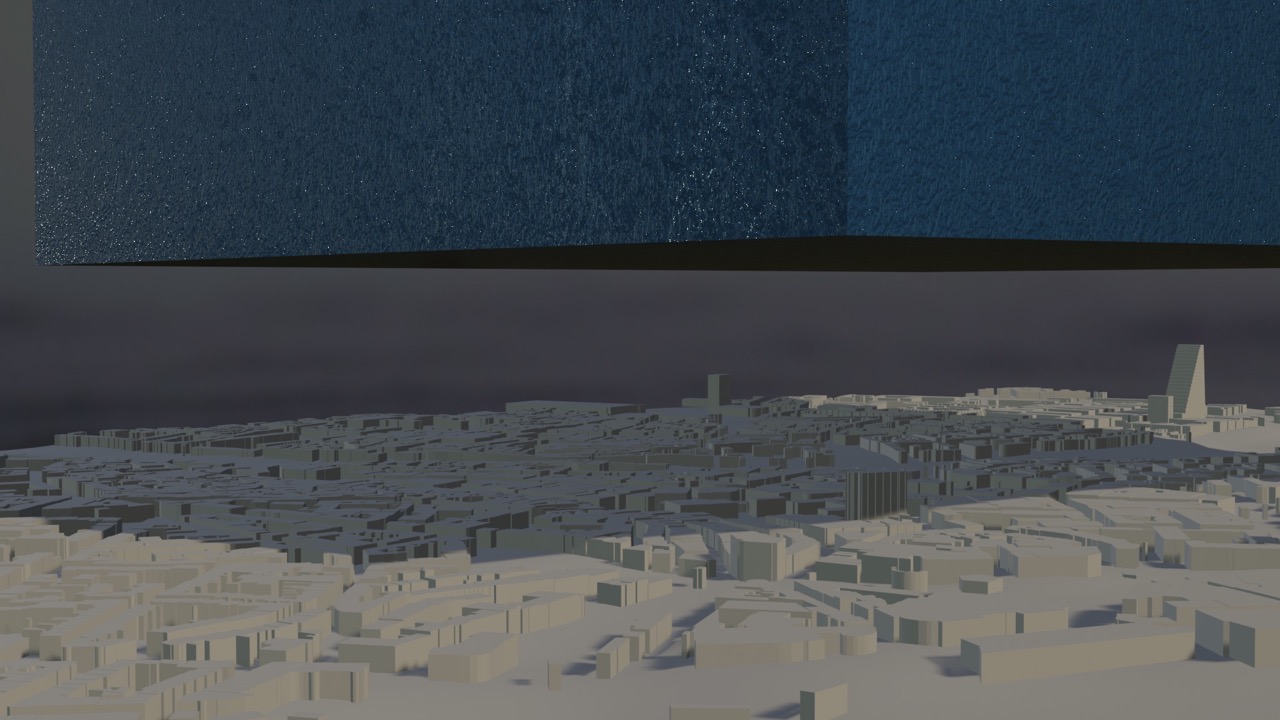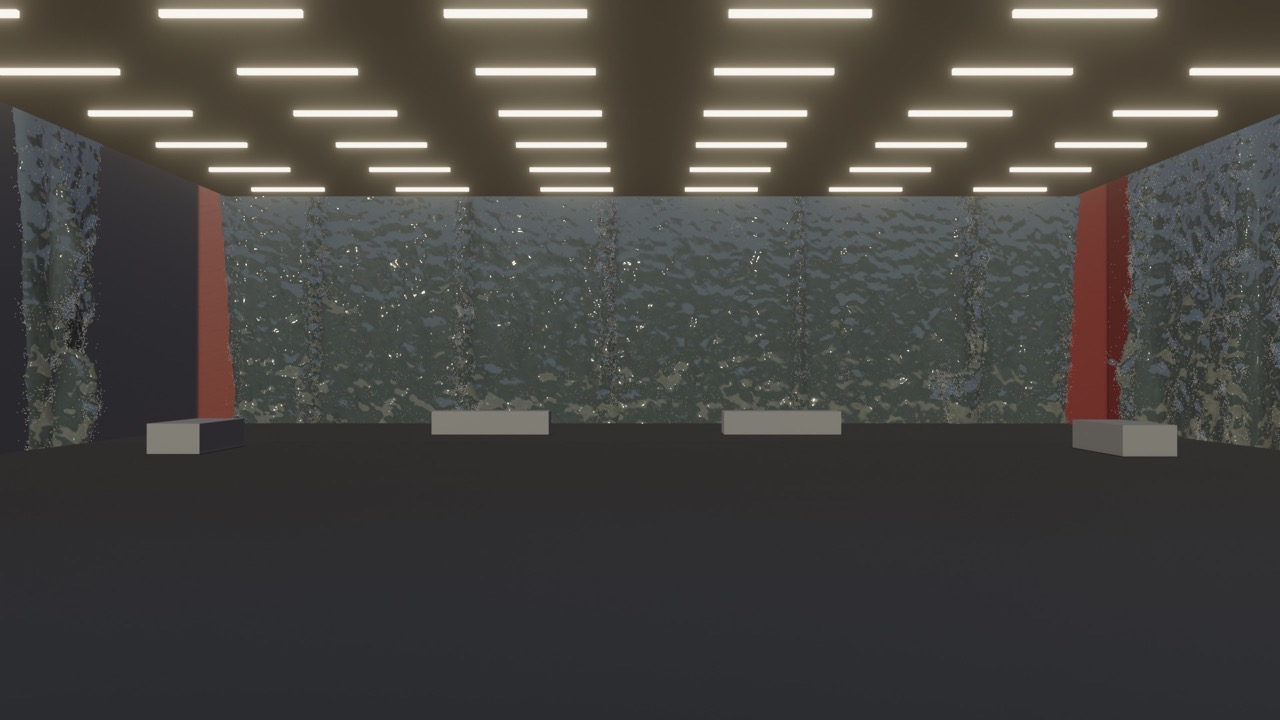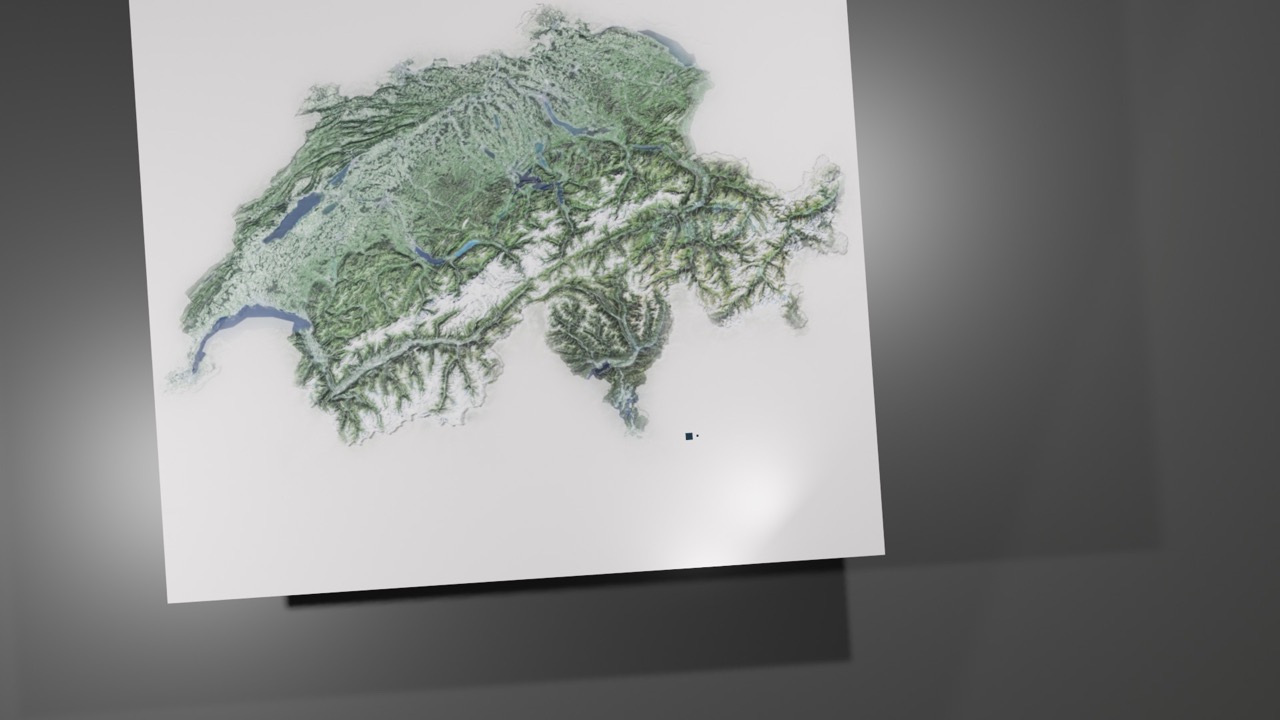Seminar: Cartes Blanches (2021–23)
Valuing Water
Fabian Maloku
A goal of this project was to create informative and more accessible visuals to help understand complex or incomprehensible data. To achieve this, I used fluid simulations to help visualise the specific areas of the overall topic. The created video can be used as a foundation for a virtual exhibition with info texts and the possibility for a more interactive version, for example in the browser or in VR.
With the problems of climate change and the rising problem of overpopulation, the equal distribution of water on our planet is a topic we will have to think about a lot more in the future. That’s why I tried to base my Project on a fictional exhibition about water and its use. With the constant growth of computing power and new ways to calculate fluid simulations, it is now possible to render fluids on home computers. Which was why I wanted to take the chance to experiment with simulations and their possibilities. Although there are still some limitations, which is why I had to reduce my rather ambitious attempt to compare different countries and focus on just one.
Water has unique physical properties, is essential for survival and is of cultural importance. Water also has different values depending on its location, use and quality. The special properties of water can be simulated and altered to create new and interesting ways of data visuals. The Fluid simulations used in this project helped the data visualisation and were not ment to be one hundred percent realistic because the process of creating these simulations was more experimental. The focus lied on the use of the simulations to support a different view on our relationship with water.
In the end the video I created should function as a concept for a virtual exhibition about our handling of water in Switzerland and to use fluid simulations in a more artistic and unconventional way rather than in a scientific context. Another goal I had was to make comparisons of complex data that more accessible and easier to understand. Although in the end the full potential of the simulations was not exhausted given the time and hardware limitations I am quite pleased with the end result which gives quite a good insight on how a virtual exhibition could look like.




